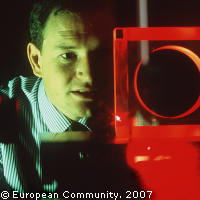Green light for JTIs
The European Parliament has given its support to the EU's first four Joint Technology Initiatives (JTIs), voting in favour of them by a large majority at a plenary session in Strasbourg. The JTIs will pool resources from industry, the Member States and the Commission, creating a critical mass in key strategic areas. Each JTI must be approved by the Council and Parliament. The first four to gain such approval address: miniaturisation technologies, invisible computers, innovative medicines and greener aviation. The four will now be launched in 2008. The Parliament vote has already been welcomed by two EU Commissioners. Information Society and Media Commissioner Viviane Reding spoke of the need for a new approach to research in certain strategic areas 'to strengthen our competitiveness and well-being'. EU Science and Research Commissioner Janez Potocnik said: 'By bringing together industry and European public research investment in a specific industrial area under one programme, we boost the chances of making a technological breakthrough putting Europe at the forefront of innovation.' JTIs are intended to target areas where existing funding mechanisms cannot deliver at the scale and speed thought necessary to keep Europe at the top of the competitiveness ladder. By bringing together national, European and industrial funding, the idea is to create incentives for increased private research spending. The first four JTIs will be: - ARTEMIS Addressing the invisible computers that can today be found in machines of all sizes and functionalities. Forecasts suggest that there will be over 16 billion embedded devices by 2010, and over 40 billion worldwide by 2020. - ENIAC Targeting the miniaturisation required for the next generations of nanoelectronics components. The JTI should help Europe to secure a share of the ¿200 billion semiconductor market, as well as a share of the innovative electronics market, which is five times larger. - Innovative medicine initiative Supporting the improved and safer development of new medicines, as well as Europe's competitiveness in biomedicine. - Clean Sky Seeking to increase the competitiveness of the European aeronautics industry whilst reducing the environmental burden of air transport (emissions and noise). Each JTI will be implemented through a Joint Undertaking, meaning that they should avoid the rigidity sometimes associated with public funding. All of the JTIs will receive money from the EU budget, in addition to money from industry and national budgets.



